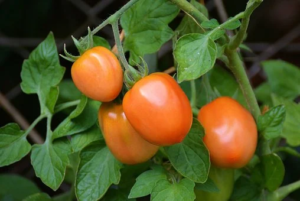Having a garden at home adds color and life to your yard and rewards you with fresh fruits, veggies, and herbs. Fortunately, you don’t need much to get started—a little planning, some basic supplies, and some good old-fashioned elbow grease are all you need to have a thriving garden of your own. If you know what to grow and where to put it, you can start your gardening journey today with these simple steps.

1. Choose the Right Location
Pick a spot in your yard that gets at least six hours of sunlight per day and has good drainage. If you’re growing food, the team at Planted Shack suggests that you make sure the location is close to your kitchen so you can easily grab fresh ingredients for meals. This is because carrying groceries through the house can cause dirt and bacteria to transfer to surfaces. It’s also important to consider the size of your plants when choosing a location. Some vegetables, like squash and pumpkins, can take up a lot of space, while herbs can be grown in smaller areas. Make sure you have enough room for all the plants you want to grow.
2. Plan What You Want to Grow
Decide what kinds of fruits, vegetables, and herbs you want to have in your garden. If you’re growing food for your family, consider what everyone likes to eat. Choose plants that add color and interest to your yard if you’re developing for beauty. Once you know what you want to grow, check out garden trends for the best varieties of each plant for your area. For instance, some tomatoes do better in warm climates while others thrive in cooler temperatures. Knowing what will grow well in your area will help you have a successful garden.
3. Get Your Soil Ready
Healthy soil is essential for a successful garden. If you’re not sure about the quality of your soil, get it tested by your local cooperative extension service. They can tell you what nutrients are lacking and how to amend the soil accordingly. Once you have your soil test results, add any necessary amendments. You can also improve the quality of your soil by adding organic matter, such as compost or manure. This will help retain moisture and provide nutrients for your plants.
4. Get Your Supplies
Now that you know what you want to grow and where you’re going to grow it, it’s time to get your supplies. You’ll need seeds or seedlings, fertilizer, mulch, gardening tools, and irrigation supplies. If you’re growing food, you’ll also need canning supplies so you can preserve your harvest. You can find all of these supplies at your local garden center or online. When choosing seeds, look for heirloom varieties that are Non-GMO and open-pollinated. Since these seeds can be saved and reused, they’re a more sustainable option than hybrid or genetically-modified seeds.
If you are interested in taking up gardening as a hobby, now is the perfect time to start. The steps involved in getting started are straightforward, so there’s no excuse not to try. All you need is a little bit of space, some soil, some seeds, and some water, and you can begin growing your fruits, vegetables, and herbs.

Recent Comments